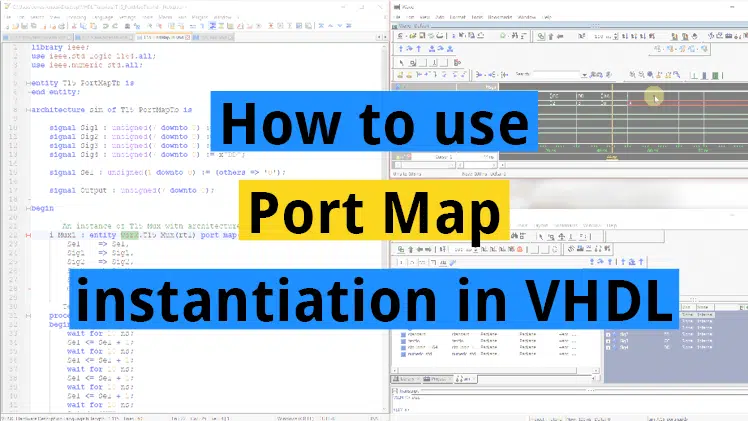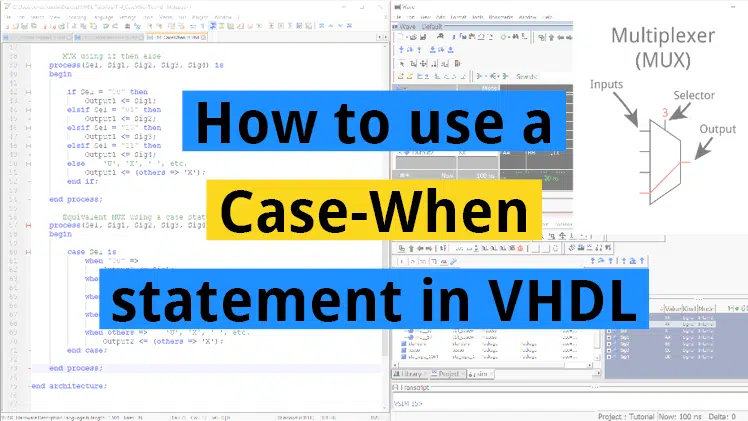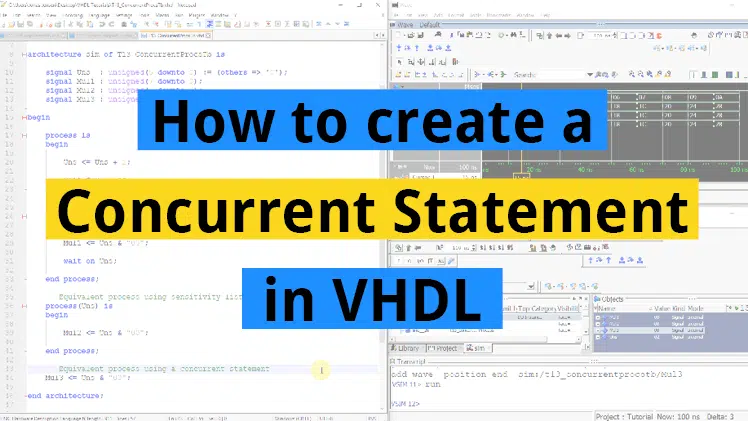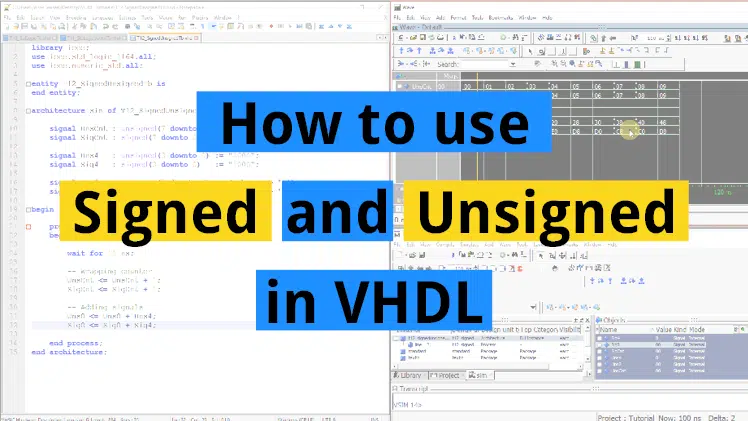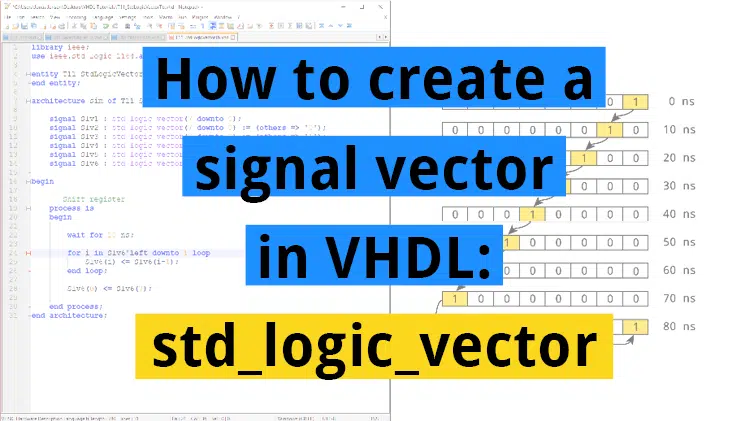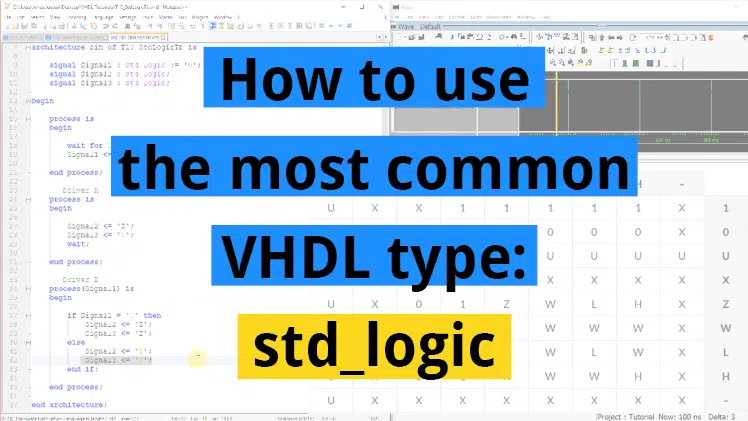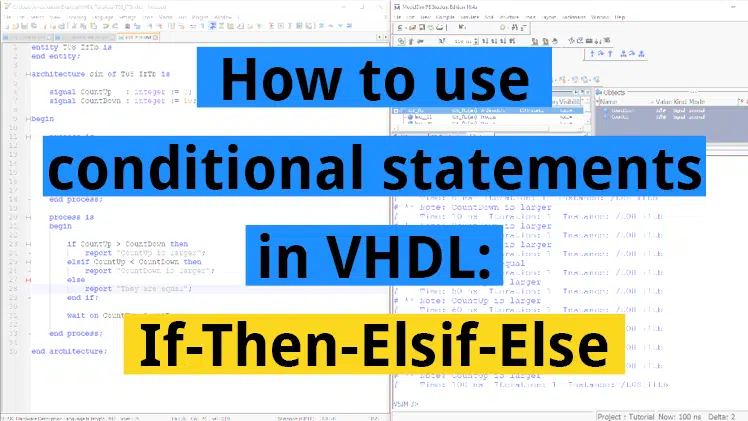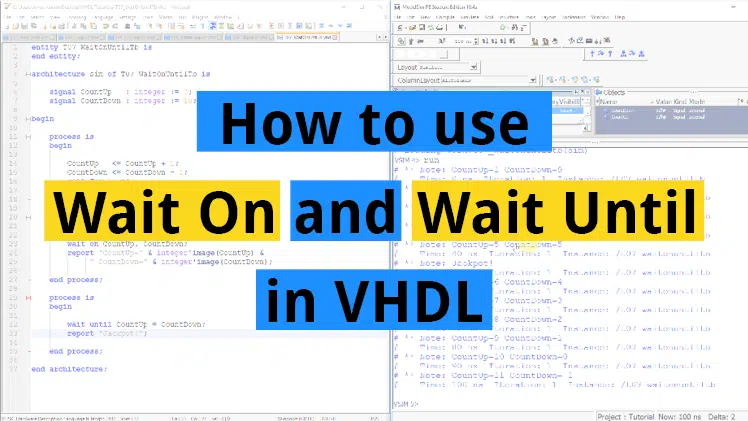How to use Port Map instantiation in VHDL
A module is a self-contained unit of VHDL code. Modules communicate with the outside world through the entity. Port map is the part of the module instantiation where you declare which local signals the module’s inputs and outputs shall be connected to. In previous tutorials in this series we have been writing all our code…

